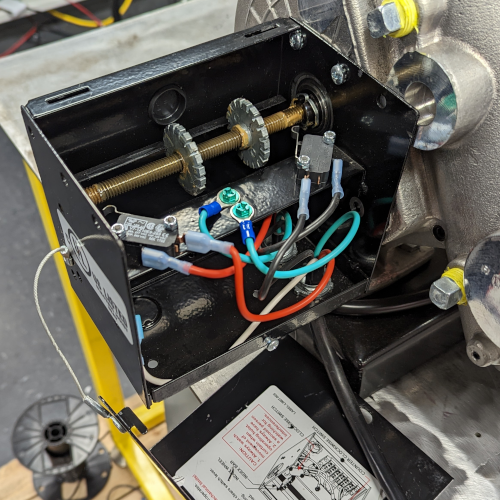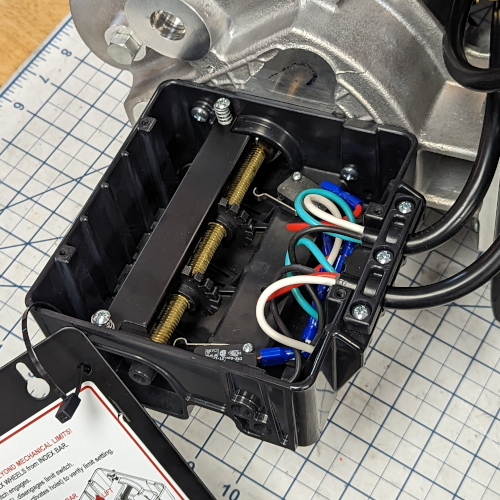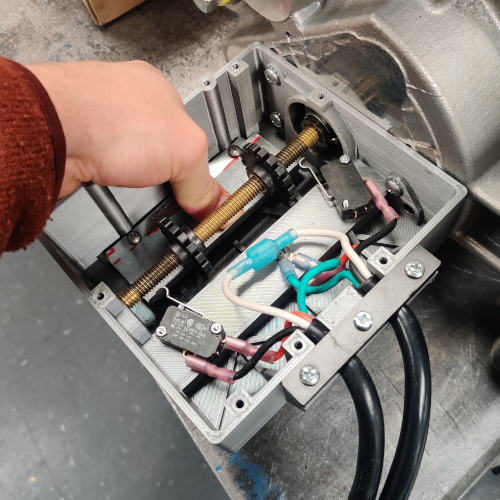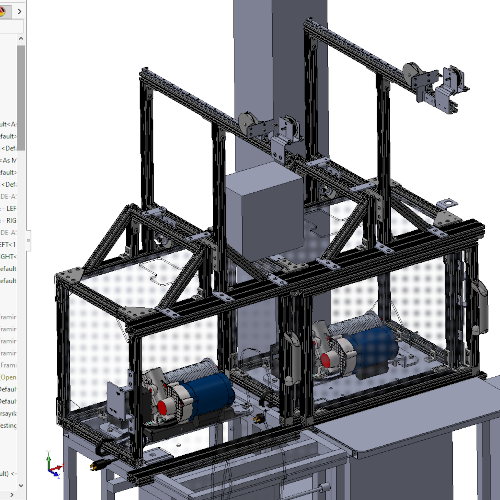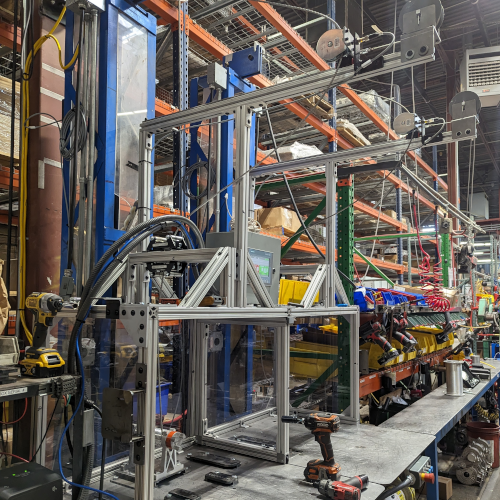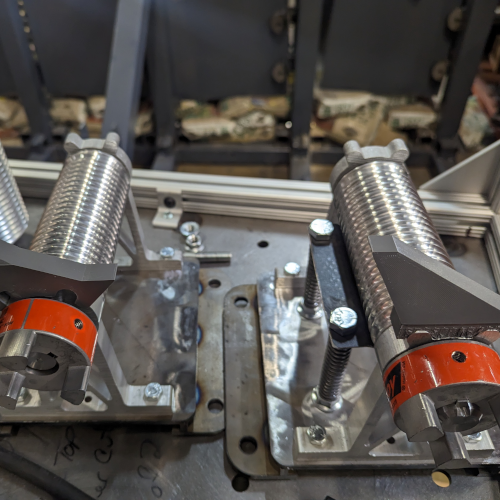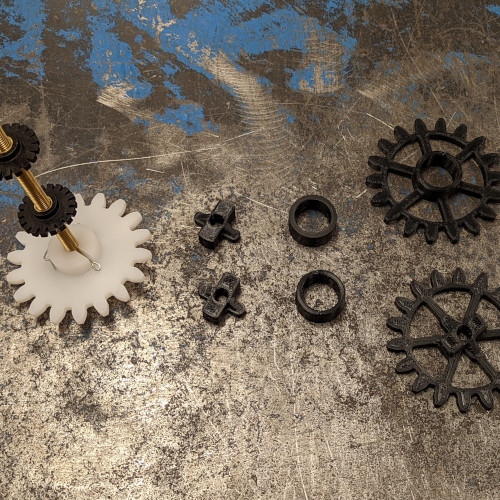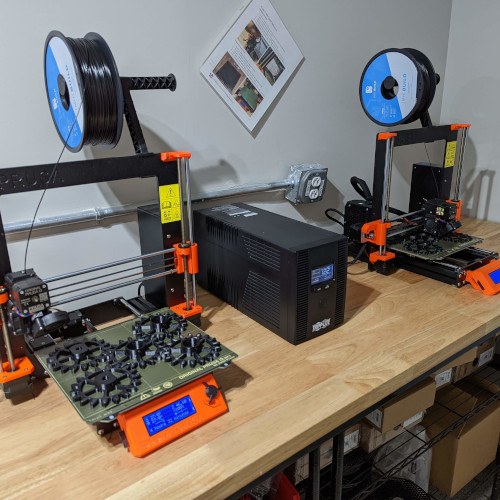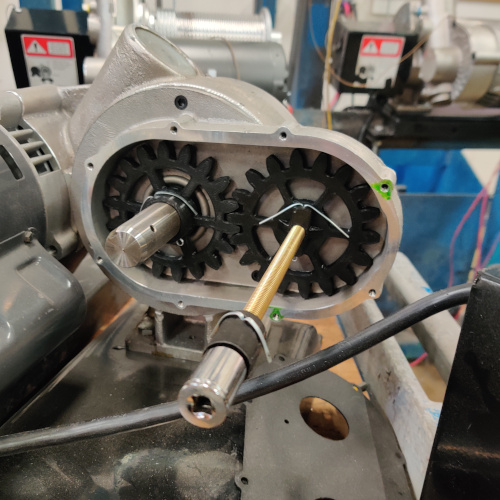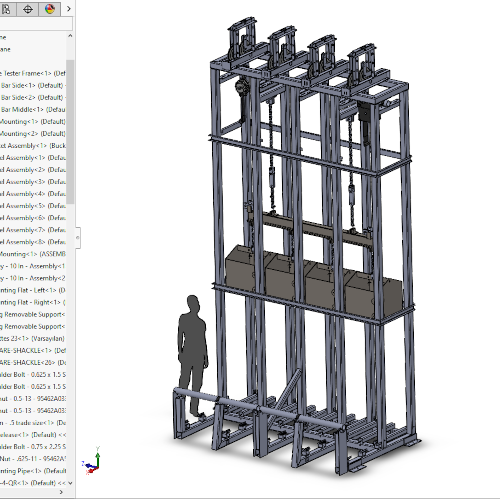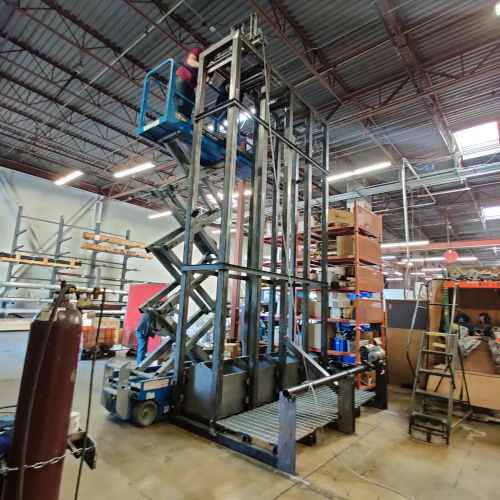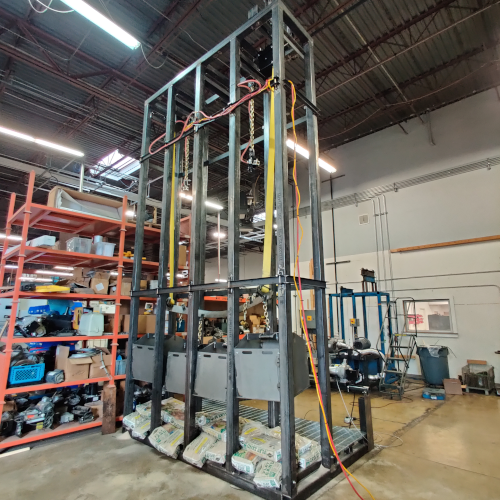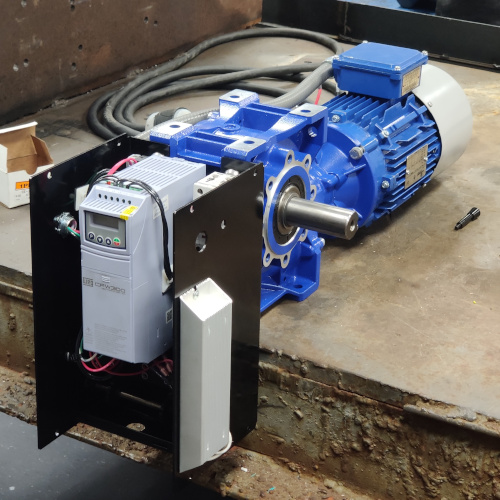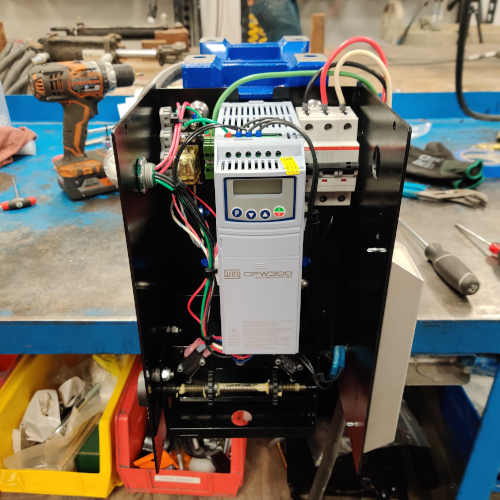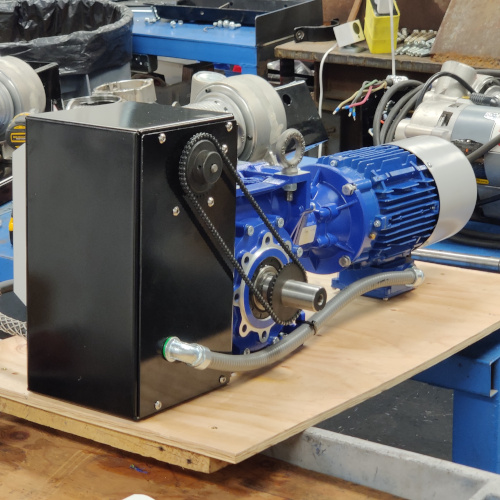Work Projects
Injection Molded Plastic Limit Box
The goal of this project was to replace a bent and welded sheet metal housed limit box assembly with an ABS plastic injection molded housing.
The project took roughly 16 months to complete, with over 10 iterations using 3D printed and machined in material prototypes, and saved $150,000 annually in material costs in addition to reduced piecework and overall assembly time. The old version of the box had to be pre-assembled off the assembly line before use. The plastic version of the box can be assembled directly on the line or partially pre-assembled off the line and takes approximately half the time of the original version to assemble. This greatly reduced the amount of piecework required and removed the limitations of requiring pre-assembled boxes.
Automated Assembly Line Winch Tester
The goal of this project was to increase throughput at the end of the winch assembly line during the testing process as well as create an automated test to free up assemblers.
This tester added a second testing bay and nearly fully automated the process. I worked on the core mechanical design and selection of electrical components. The design uses slotted aluminum extrusion for the main frame, a linear rail for a cable tensioner, and a Siemens s7-1200 along with several modules for the automation system. The user sets the voltage through the screen, is then prompted to manually check the limit switches, then the tester automatically runs a hipot test, checks the amperage, lifting time, and keeps tension on the cable during the first two wraps before lifting begins. This doubled throughput by having a two bays that can run at the same time, as well as nearly completely freed up the user for other tasks as previously the user had to stand at the bay and hold a switch.
3D Printed Limit Gears
This project looked at reducing cost by moving a set of plastic injection molded and machined spur gears to in-house 3D printing.
These gears are low load motion transfer gears that translate motion from the drive shaft of a winch to a shaft that is used to set the limits of rotation through electrical disconnect switches. I changed the production process for these gears from injection molding and machining to in-house 3D printing due to the light loads needed. After proving out and dialing in the 3D print design, we purchased three Prusa i3 MK3S+ 3D printers and ABS 3D printing material for production of these gears. These gears went from $6.27 to $0.61 (90% cost reduction) and broke even on printer costs within 1 month. This change saved approximately $15,000 in raw material cost and moved production in-house to limit production issues due to COVID as well as freed up machining time.
Winch Cycle Tester
This was a project to replace a smaller winch cycle tester with a larger 20' version with 2 additional bays that could also be used as a drop tester for safety straps.
The old version of this winch cycle tester was ~8' tall and had a winch travel distance of only ~4'. The new version let us test winches with ~16' of travel. I worked on the core mechanical design of the structure as well as selection of the electrical components for the automation and monitoring systems. The control system uses a Siemens s7-1200 with several modules to monitor temperatures of the motors and gearcases, internal pressure of the gearcases, the weight being lifted, and the upper and lower limits of the lifting cycle. This design also doubles as a drop tester for testing safety catch equipment and has caught 7000lbs on a single drop.
Heavy Duty Hoist
This design came from a customer with a custom request to build a very high capacity hoist. Success of this project led to repeat purchases as well as some other custom variations being produces. It used a large 220:1 double reducer with a 3-phase motor and brake. It was controlled by a WEG VFD and used our limit box custom fit to the new housing using a chain drive.
